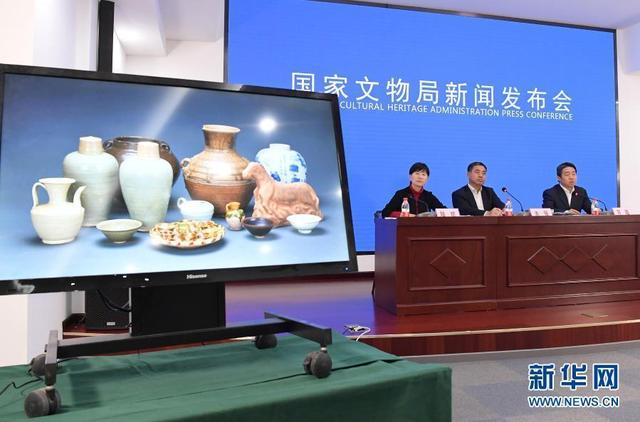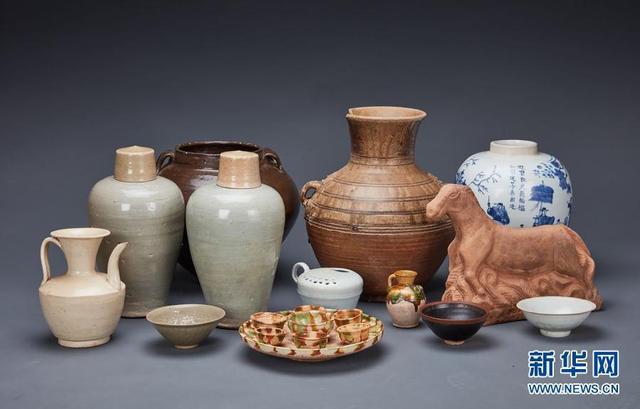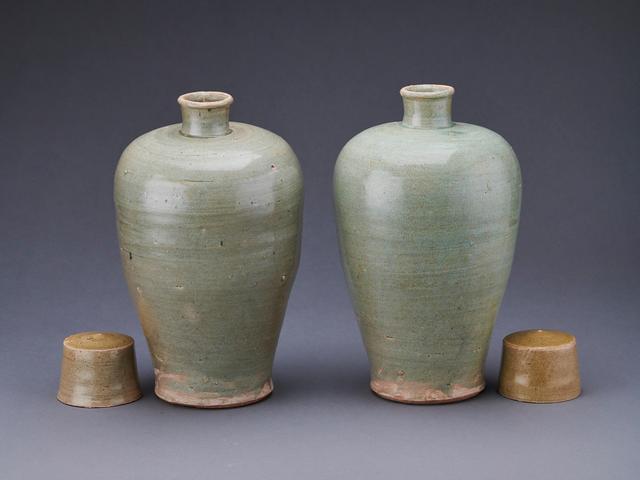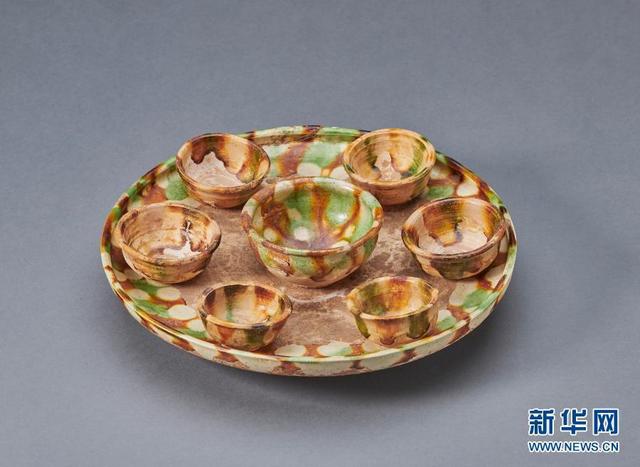

Sixty-eight Chinese cultural relics smuggled into Britain 25 years ago have recently been recovered, China’s National Cultural Heritage Administration (NCHA) revealed at its regular news conference Wednesday, thepaper.cn reported on Nov. 18.

Press conference of the National Cultural Heritage Administration. (Photo/Xinhua)
Many of these long-lost artifacts are outstanding artworks of important historical, artistic, and scientific value, such as the Tang Tri-colored Glazed Seven-Star Plate that was popular in the Tang Dynasty, bluish white porcelain that prevailed in the Song Dynasty, carved stone horse of the Yuan Dynasty or Ming Dynasty, and a set of celadon prunus vases produced in the late Yuan Dynasty or early Ming Dynasty, according to the press conference.
Of the 68 cultural relics, 13 were tentatively rated as second-grade cultural relics, 30 were rated as third-grade cultural relics, and 25 were categorized as ordinary cultural relics, said Deng Chao, director of the Cultural Relic Repatriation Office of the NCHA.

Some of the recovered cultural relics. (Photo/Xinhua)
These retrieved cultural relics date back to the period from the Spring and Autumn Period (770B.C.- 476B.C.) to the Qing Dynasty (1644-1911), while their places of origin include many Chinese provinces, including east China’s Jiangxi, Anhui, and Fujian, central China’s Henan province, northwest China’s Shaanxi, north China’s Hebei, as well as southwest China’s Guizhou, Deng said.
The NCHA has been working closely with the relevant departments including China’s Ministry of Foreign Affairs and customs authorities to bring about the recovery of these smuggled cultural relics since January, said Guan Qiang, deputy head of the NCHA.

A set of celadon prunus vases. (Photo/Xinhua)
Thanks to the joint efforts of the above departments and the strong support of the Chinese Embassy in Britain, these cultural relics were finally returned to China in October, marking a complete success in the 25 years of transnational cultural relics retrieval operations, Guan noted.

Carved stone horse. (Photo/Xinhua)
The return of these cultural relics also represents a good example of cooperation on combating cultural relics smuggling and facilitating the retrieval and return of cultural relics under the framework of the UNESCO Convention on the Means of Prohibiting and Preventing the Illicit Import, Export and Transfer of Ownership of Cultural Property, commonly known as the UNESCO 1970 Convention, Guan pointed out.
Over the past 20 years, China has been constantly improving its capability to protect cultural relics and retrieve lost cultural relics, committed itself to just causes aimed at promoting reforms and improvement in international rules regarding the return of cultural relics, and sought to push international rules in the direction of becoming fairer and more just.

Tang Tri-colored Glazed Seven-Star Plate. (Photo/Xinhua)
The country has also made active efforts to boost the promotion, reform, and improvement of the UNESCO 1970 Convention and the 1995 UNIDROIT Convention on Stolen or Illegally Exported Cultural Objects, signed bilateral agreements on the retrieval and return of lost cultural relics with 23 countries, established relevant international cooperation mechanisms with Chinese characteristics, and taken the lead in efforts to issue the Dunhuang Declaration on the protection and return of illicitly exported stolen cultural property.
China has always insisted that lost cultural relics should be returned to their countries of origin, while contributing wisdom and strength to reforming and improving international rules concerning the return of cultural relics.
 Fire brigade in Shanghai holds group wedding
Fire brigade in Shanghai holds group wedding Tourists enjoy ice sculptures in Datan Town, north China
Tourists enjoy ice sculptures in Datan Town, north China Sunset scenery of Dayan Pagoda in Xi'an
Sunset scenery of Dayan Pagoda in Xi'an Tourists have fun at scenic spot in Nanlong Town, NW China
Tourists have fun at scenic spot in Nanlong Town, NW China Harbin attracts tourists by making best use of ice in winter
Harbin attracts tourists by making best use of ice in winter In pics: FIS Alpine Ski Women's World Cup Slalom
In pics: FIS Alpine Ski Women's World Cup Slalom Black-necked cranes rest at reservoir in Lhunzhub County, Lhasa
Black-necked cranes rest at reservoir in Lhunzhub County, Lhasa China's FAST telescope will be available to foreign scientists in April
China's FAST telescope will be available to foreign scientists in April "She power" plays indispensable role in poverty alleviation
"She power" plays indispensable role in poverty alleviation Top 10 world news events of People's Daily in 2020
Top 10 world news events of People's Daily in 2020 Top 10 China news events of People's Daily in 2020
Top 10 China news events of People's Daily in 2020 Top 10 media buzzwords of 2020
Top 10 media buzzwords of 2020 Year-ender:10 major tourism stories of 2020
Year-ender:10 major tourism stories of 2020 No interference in Venezuelan issues
No interference in Venezuelan issues
 Biz prepares for trade spat
Biz prepares for trade spat
 Broadcasting Continent
Broadcasting Continent Australia wins Chinese CEOs as US loses
Australia wins Chinese CEOs as US loses